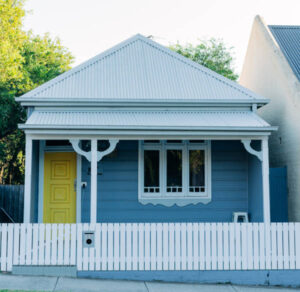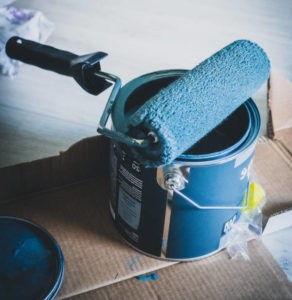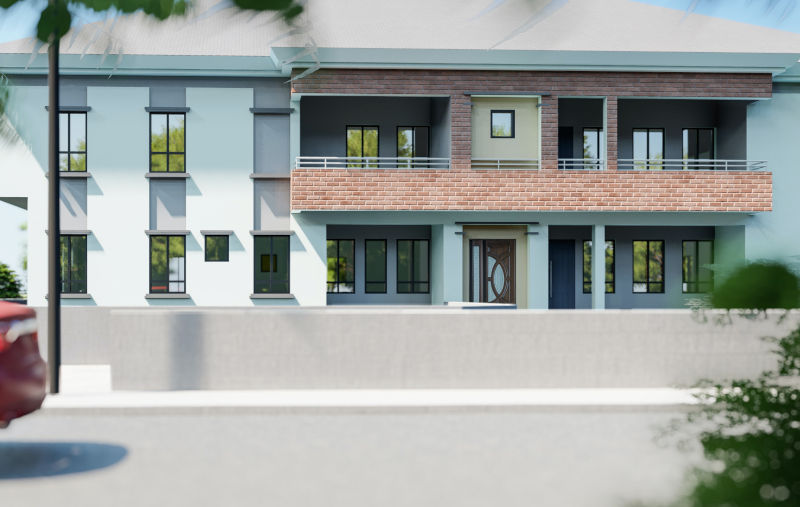Even though painting is typically the next step once rendering is done, not everyone knows when the right time is to start painting over their fresh render.
You should not paint on to new render before it is completely dry. The drying process can take up to six weeks. You may also need to apply primer to your render before painting if the wall surfaces are rough or sandy. You will have to wait at least four hours for the primer to dry before painting.
How long does render need to dry before painting?
Before you can start painting on a rendered wall, you will need to wait up to 4 – 6 weeks for the walls to finish going through the hydration process. Once the surface has hardened and all the water has fully evaporated, you’ll know that it’s done drying and is ready for you to start painting. If the wall is painted on too early, you may start to see some cracks and bubbles appear on the surface of the wall after painting it.
If the painting process is not done correctly the first time, another paint job will have to be done in the future. It will also impact the appearance of the render, leaving you unhappy with the aesthetic of your home.
 How do you prepare render for painting?
How do you prepare render for painting?
Before you get started, clear out the area around the wall and remove any flaking paint or dirt. After you’ve prepped the wall, tape up the sections you don’t want to get painted on and lay some drop sheets out. The sheets are used to cover up any surrounding furniture and/or the floor as necessary. It’s important to remember that you will need to wait until the render is dry before you start painting. You might also need to apply some primer if the wall surfaces are rough or sandy. Make sure you have the right quality tools and PPE gear for these tasks.
Make sure you sand wood render before painting. This smooths the wood in preparation for the paint.
Do you need to seal the render before painting?
You don’t necessarily need to seal your new render before you start to paint over it. You should apply at least a thinned first coat as a mist coat. You should then apply the appropriate number of coats on top of it to finish the project. This is usually enough to start the painting process.
But, if a certain part of your render meets with the windows, you might want to seal some of the edges. This makes it easier for you when you start to paint. With that being said, most modern-day paint doesn’t require any pre-work before they’re applied. So, you don’t have to worry about running into any issues if you decide to paint your render without sealing it.
Do you need to prime render before painting?
Similar to sealing your render before painting on it, you don’t have to apply primer to the render if you don’t want to. But there are certain situations where it’s a good idea to do so, particularly if the surface of the wall is rough or sandy. You will also need a primer if you want to paint over a darker colour with a lighter one. This ensures that your paint sticks to the wall and the colour stays vibrant longer.
If you do decide to prime your render before painting it, make sure that you wait for your primer to dry before you start painting. On average, this can take 4 hours. This extra waiting time will contribute to the quality of the finished look and add to the benefits of rendering your house!
How soon can I paint cement render?
For cement render, you will need to give it some time to cure before you can start painting over it. This can take anywhere up to a month if you’re planning on using acrylic paint and up to 2 months for oil-based paint. Although this process will take some additional time, it’s critical to make sure that your render is dry before you decide to begin painting. If you decide to paint onto your render while it’s still damp, you risk exposing the render to mould or flaking in the future.
 What type of paint to use on render?
What type of paint to use on render?
There are many different types of paint that you could potentially use to paint your render. If your priority is to keep the process moving as quickly as possible, we recommend acrylic paint because it only takes a few hours to dry. This will allow you to wait less time for your render to cure before you can start to paint on it. On top of that, acrylic paint is also water-resistant which means that it’s not as likely to get damaged by any moisture.
Oil-based paint does take a longer time to dry but is still a good option. This is because it provides a smoother and longer-lasting finish. So, if you’re not as concerned about the additional drying time, oil-based paint could be the right option for you!
Can you paint render in the winter?
While you can still paint on your render in the wintertime, it’s not necessarily the best time of the year to do so. This is because it will take your render a longer time to dry, and you will have to factor in weather conditions. This way you can prevent rendering issues caused by rain.
The best time of the year to paint your render would be around the spring or summertime. The warm weather will provide a more suitable climate for the drying process. If you do decide to paint in the wintertime, you can use some all-season masonry paint. But, the surface of your render needs to be dry, and the temperature can’t drop below 5 degrees Celsius.
Is it hard to paint render?
Depending on the age of the wall, it may be more difficult to paint on certain rendered walls compared to others. Generally, older rendered walls are more difficult to paint on and takes more skill to do successfully. The reason for this is because older walls tend to have more issues, such as cracks or mould, that need attention compared to newly rendered walls. It’s a good idea to have a professional inspect an older wall for any problems before you start your paint job, to avoid any headaches.
We hope you found this article useful, please let us know in the comments what kind of projects you have been up to! If you enjoyed this blog, check out some of our other articles such as ‘Bathroom Renovations: In What Order Do You Tile A Shower? ‘ or ‘What Mask is Best for Glasses’.
We also have a range of quality diamond blades for sale specifically for precision cutting of concrete, brick and stone. Also, check out our diamond grinding segments for concrete grinding from anything from sculptures to concrete flooring.




